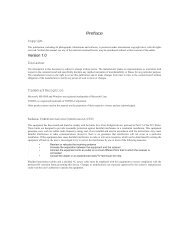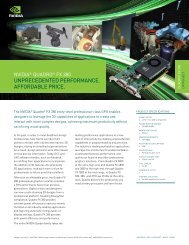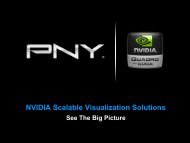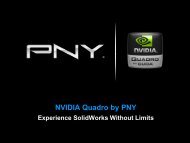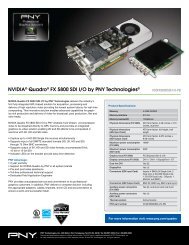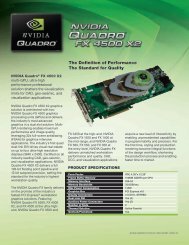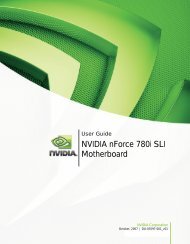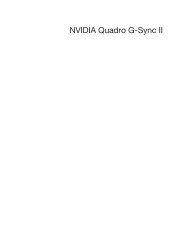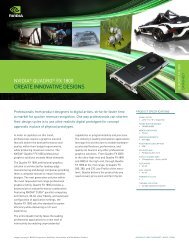10 AND 12-BIT GRAYSCALE TECHNOLOGY - Nvidia
10 AND 12-BIT GRAYSCALE TECHNOLOGY - Nvidia
10 AND 12-BIT GRAYSCALE TECHNOLOGY - Nvidia
You also want an ePaper? Increase the reach of your titles
YUMPU automatically turns print PDFs into web optimized ePapers that Google loves.
INTRODUCTIONAdvances in sensor technology and image acquisition techniques in the field ofradiology are producing high bit depth grayscale images in the range of <strong>12</strong> to 16-bit perpixel. At the same time, the adoption of displays with native support for <strong>10</strong> and <strong>12</strong>-bitgrayscale is growing. These affordable displays are DICOM[1] conformant to preserveimage quality and consistency. Furthermore, expanded display capabilities of the latestNVIDIA Quadro ® cards enable tiling together multiple high resolution displays for sideby-sidecomparisons from a single card.Standard graphics workstations however are limited to 8-bit grayscale, which providesonly 256 possible shades of gray for each pixel sometimes obscuring subtle contrasts inhigh density images. Radiologists often use window-leveling techniques to identify theregion of interest that can quickly become a cumbersome and time-consuming userinteraction process.NVIDIA’s <strong>10</strong>–bit and <strong>12</strong>-bit grayscale technology allows these high quality displays tobe driven by standard NVIDIA ® Quadro ® graphics boards preserving the full grayscalerange. This is done in 2 modes. “Pixel Packing” where the <strong>10</strong>-bit or <strong>12</strong>-bit grayscale data is transmitted from theQuadro graphics board to a high grayscale density display using a standard DVIcable. Instead of the standard three 8-bit color components per pixel, the pixelpacking allows two <strong>10</strong> or <strong>12</strong>-bit pixels to be transmitted, providing higher spatialresolution and grayscale pixel depth as compared to an 8-bit system. In recent driers,this pixel packing is done by driver transparent to the application when <strong>10</strong>-bit percomponent pixel formats are used. This greatly simplifies programming in additionto making the application portable across multiple vendor hardware. Using <strong>10</strong>-bit pixel formats over a VESA ® DisplayPort output connection. No pixelpacking is required as DisplayPort has sufficient bandwidth to transfer 5 MPixelswith full <strong>10</strong>-bit RGB color channels.<strong>10</strong> and <strong>12</strong>-Bit Grayscale Technology TB-04631-001_v04 | 1



